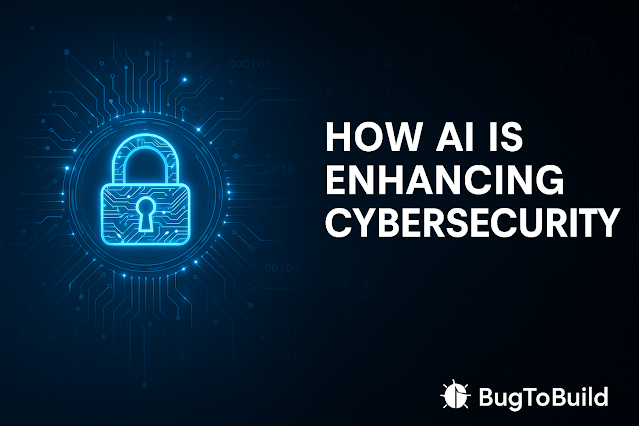Introduction
As digital threats continue to evolve with increasing sophistication, the need for robust cybersecurity measures has never been more critical. Traditional security tools, primarily rule-based and signature-dependent, struggle to keep pace with the rapid advancements in cyber attack techniques. Enter Artificial Intelligence (AI) – the game-changer in the field of cybersecurity. AI-based tools are now at the forefront, leveraging machine learning and advanced algorithms to proactively detect, mitigate, and respond to emerging threats. This blog post explores how AI is enhancing cybersecurity by enabling smarter threat detection and response, ultimately creating safer digital environments.

Content Outline
1. Understanding the Limitations of Traditional Cybersecurity
2. How AI Enhances Threat Detection
- Behavioral Analysis
- Anomaly Detection
- Predictive Capabilities
3. Real-Time Response and Automated Threat Mitigation
4. The Role of AI in Phishing and Fraud Prevention
5. Challenges and Considerations in Implementing AI for Cybersecurity
- Data Privacy and Ethics
- AI-Powered Attacks
- The Need for Human Oversight
6. Future of AI in Cybersecurity
Conclusion
1. Understanding the Limitations of Traditional Cybersecurity
Conventional cybersecurity methods typically rely on predefined rules and signature databases to identify threats. While effective against known attacks, this approach falls short against novel or evolving threats that do not match existing patterns. Hackers often bypass these systems by slightly altering their tactics, making signature-based detection technology obsolete. Additionally, the sheer volume of data generated by modern network environments makes manual monitoring and analysis impractical, if not impossible.
2. How AI Enhances Threat Detection
AI, particularly through machine learning, offers a dynamic approach to cybersecurity by learning from data rather than relying solely on pre-determined rules. Here’s how AI enhances threat detection:
- Behavioral Analysis:
AI systems can learn the normal behavior of a network, device, or user by analyzing historical data. Once established, they can detect deviations that may indicate malicious activity, such as unauthorized access or unusual file transfers.
- Anomaly Detection:
AI excels at identifying anomalies in vast datasets. For instance, AI can recognize subtle patterns in network traffic that might signify a Distributed Denial of Service (DDoS) attack or detect a sudden spike in login attempts from unusual locations, potentially flagging a brute-force attack attempt.
- Predictive Capabilities:
By leveraging big data and predictive analytics, AI can forecast potential attack vectors based on observed trends. This proactive stance allows organizations to fortify vulnerable areas before they are exploited.
3. Real-Time Response and Automated Threat Mitigation
AI is not just about detection; it also enhances response capabilities. Automated systems can react instantly to neutralize threats, often before they cause significant damage.
- Automated Incident Response: AI can trigger predefined actions to contain threats, such as blocking malicious IP addresses, isolating infected devices, or resetting compromised accounts. These rapid responses drastically reduce the window of opportunity for attackers.
- Adaptive Learning: AI systems continuously improve their effectiveness by learning from each incident, refining their algorithms to better detect and mitigate future threats. This adaptability ensures the defenses remain agile against evolving tactics.
4. The Role of AI in Phishing and Fraud Prevention
Phishing attacks, designed to trick individuals into divulging sensitive information, are a major cybersecurity concern. AI can analyze vast amounts of communication data (emails, messages) to identify phishing attempts. Natural Language Processing (NLP) can recognize suspicious language patterns, while image recognition can detect deceptive visuals often used in phishing campaigns. Similarly, AI can help financial institutions detect fraudulent transactions by evaluating spending patterns in real time and flagging anomalies that may indicate fraud.
5. Challenges and Considerations in Implementing AI for Cybersecurity
While AI offers significant advantages, it is not without its challenges:
- Data Privacy and Ethics:
AI systems require access to large datasets, often including sensitive information. Ensuring this data is handled responsibly and complies with regulations like GDPR is critical.
- AI-Powered Attacks:
Just as AI can enhance defenses, attackers can also use AI to improve their strategies. AI-generated phishing messages or evasion techniques that exploit vulnerabilities in AI models are emerging concerns.
- The Need for Human Oversight:
AI should complement, not replace, human expertise. Incorrectly tuned models could generate false positives or miss subtle threats. Continuous monitoring and fine-tuning by skilled professionals are essential.
6. Future of AI in Cybersecurity
The future of AI in cybersecurity looks promising. Advances in quantum computing, federated learning, and explainable AI will further enhance detection and response capabilities. Integration with Internet of Things (IoT) security and cloud-based infrastructures will become increasingly important as these platforms become more prevalent. Collaborative AI systems, where multiple organizations share threat intelligence while preserving privacy, also represent an exciting frontier.
Conclusion
AI is transforming cybersecurity by enabling more intelligent and proactive defenses. From automated threat detection to real-time response and continuous learning, AI tools make it possible to stay ahead of ever-evolving threats. However, successful implementation requires careful consideration of data privacy, ethical use, and human oversight. As cyberattacks grow in complexity, embracing AI-based solutions is no longer an option but a necessity for businesses and organizations seeking to safeguard their digital assets. The synergy of human ingenuity with AI's computational power will define the future of cybersecurity, ensuring a safer digital world for all.
Final Thought
As we continue to navigate the complex cybersecurity landscape, staying abreast of technological advancements is crucial. AI is not a silver bullet, but when deployed thoughtfully, it can provide a robust layer of protection in your cybersecurity arsenal. As threats evolve, so too will AI, continually raising the bar for what’s possible in securing our digital future.

Post a Comment
0Comments